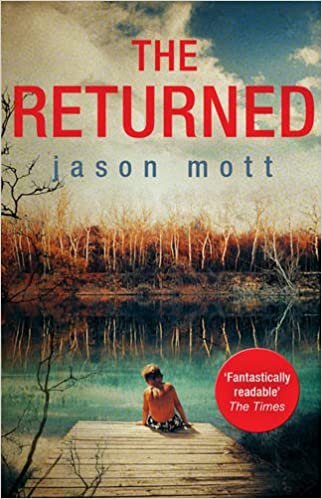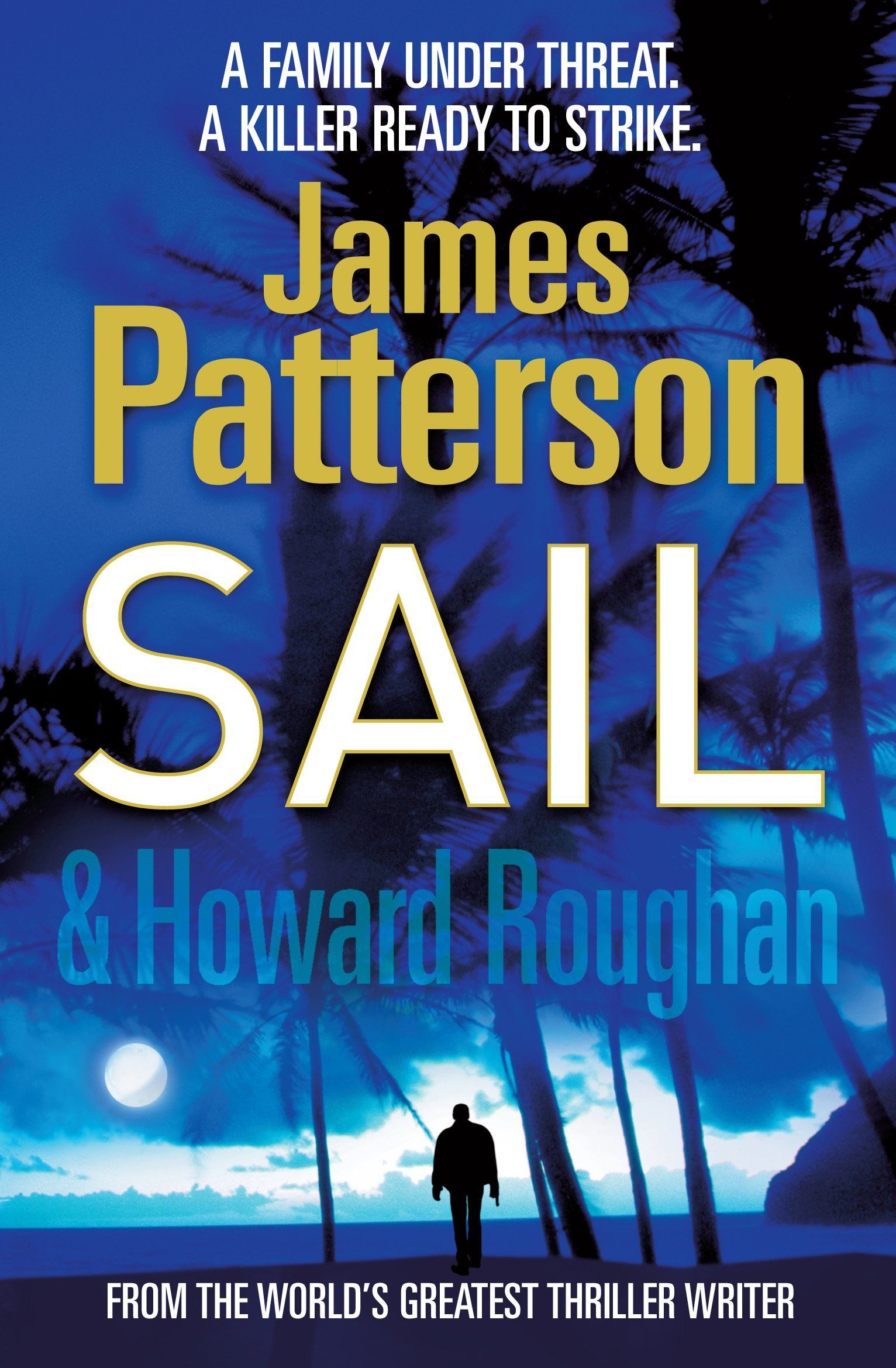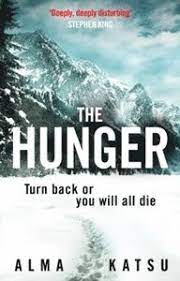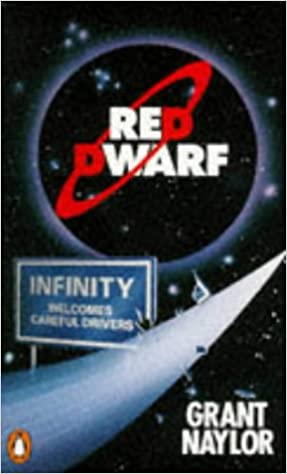The Hunger - A Review
Introduction
On the Trail: The Jumping Off Point to the West
The Hunger follows the Donner party wagon train which was heading west for California (1846-47). The wagon train was made up of several families who were seeking a better future, but if they knew how bad the trip would be they might have not done it at all. The book is based on a true event with most of the characters being real people; not only is it a story of an ill-fated group of people trying to make a better life for themselves, it is also the story of America itself. At the time that the Donners and the other families made their journey west about forty per cent of the population lived west of the Appalachian Mountains, but it was still uncharted territory and little was known about the area.
What I have learnt from reading this brilliant book is the importance of the historical relevance that is the backbone of the whole book. By understanding the real life story we can begin to understand the characters in the book and imagine what it must have been like in uplifting your whole family and life away from what was familiar. To emigrate thousands of miles to the west in seek of a better life. Difficult today, even more so back then. And that is why the historical note at the back of the book was so grateful to me. And so, before I go any further the facts must be known.
On the 15th of April 1846 two families, the Donners and the Reeds, left Springfield, Illinois for Independence in Massachusetts. However, by the 1st of November 1846 winter has come and they are stuck on the wrong side of the mountains. They had joined a much larger wagon train (the Russell party) but at some point parted ways as the Donners and Russells decided to try out a shortcut, but this had cost them dearly and out of the ninety people who were stranded at Truckee Lake, only fifty made it through alive. We honour their courage, but also marvel at their ability to make the journey west.
Synopsis:
Having journeyed west for weeks, they have reached a crossroads. Two diverging paths lead to the same destination. Desperate to cross the mountains before the weather turns, George Donner’s decision will affect the lives of everyone travelling with him.
Minor disagreements turn into violent confrontations as the ill-fated group struggles to survive. And a few begin to realise that the threat they face is something more primal, and far more deadly, than the fury of the elements.
Based on the true story of one of the most infamous events in American history, The Hunger is an eerie, shiver-inducing exploration of human nature pushed to its breaking point.
Meet the Party: The Characters
While there are many characters within the book, I will only talk about the main ones here. And it might get a little complicated because of the number of families that were within the wagon train. Firstly, is Charles Stanton a bachelor who had to leave Springfield after the love of his life Lydia tragically died. But that was not the reason, Charles had a secret in which he always kept within him. A secret that people would not believe and so he had to go west. He is unable to love again, although gets close to someone within the wagon train, and believes that his trust is not worthy to anyone. Even his new found love.
Next is Edwin Bryant, another person who is travelling alone. He is a journalist come doctor, he feels that it is better to travel alone rather than within a large group and tries to persuade Charles to join him. However, he turns him down and so Edwin leaves the wagon train, being pulled by the stories of the Indian tribes that inhabit the unknown land. During his journey west, Edwin writes letters – mainly to his friend Charles – and learns of a chilling story of a beast-like creature that feeds on human flesh. Gross right?
The first of the main wagon party families is the Donners. George Donner leads the wagon train, although is overthrown as the leader when trust in him amongst others in the group boil over. Later down the trail the Donners are left behind and become stranded by a creek, it is believed, though some of the children might have survived, that the majority of the Donners and their teamsters perished on route to California. His wife Tamsen, was a strange complex person; more beautiful than any other woman that most men have seen before, and some say that she was a witch but it could just be that she was different from the others. And on top of all that, her daughter Elitha can hear the voices of dead people in her head. It seems that this family is just out right strange or have gone mad one by one.
Another family travelling with the wagon train are the Reeds. Margaret’s husband James leads the family and at one time overthrows George Donner for the leadership of the wagon train. However, a respected and trusted leader, he falls from grace when an incident happens and the consequences of his actions results in somebody getting killed. Despite this, most people within the group still, in some way, look up to him and any bad feeling that you may get from him he is one of the genuine good guys that are within the wagon train.
One of the other families are the Graves, Mary Graves takes a liking to Charles Stanton and it could potentially be love. But her father, Franklin, does not approve and tends to treat her like a little girl. Throughout the book Mary and Charles get closer and closer to one another and by the end of the book they leave the wagon train with a few other people in the hope that they may survive the winter, get to Independence and are then able to send for help and supplies to the rest of the wagon train. If you took out all the horror, the bitter hardship and the struggle for survival away, then it would just be a love story between these two characters I think. Which is nice, but may not be as gripping as it stands now.
And last, but not at all least, is Lewis Kesseberg. Quite a different man from all the rest. He is undoubtedly the bully of the group, a manipulative, self-loving, predatory evil of a man; his aggressive behaviour and sole desire to be leader of the group make him someone that make you want to hate the man, let alone be trusted. Bute is the only word I can use to describe him. But, this is a feeling that I got latter on in the book. When you first come across Kesseberg you think he’s alright, maybe someone you wouldn’t like in real life, and that some of his actions may be because of the situation him and the others are in. However, it is only latter that things change dramatically and you start to have a real hatred for the man. His uncle, Reiner, headed west before he did and unfortunately perished on the way, maybe it is this that caused him to go mad. We will never know.
Now, there are many more that I could discuss here, but if I did that this post would be too long and you would lose interest. These characters take the brunt of the action within the book and the way that they interact with one another is what gives the book the edge. And the fact that a large majority of the characters are real people, it is thanks to them and to their bravery on going on such a trip that this story, and book, would not exist. Thanks guys!
Into Unchartered Territory: The Plot
The wagon train is several months into their journey to California and there is still a long way to go. The action begins in June 1846, the wagon train has set up camp and already there are fractions within the group. Edwin Bryant is preparing to leave the wagon train, as a journalist and fascinated by stories of the Indian tribes that inhabited the lands to the west he feels that travelling alone is much better for a single man than it is travelling in a group. But it meant leaving his only friend, Charles Stanton. Stanton felt different, he felt safer within a group and found himself to have a leading role, but not as a leader. That role was left to George Donner and Lewis Kesseberg.
The horror starts early on in the book as a little boy goes missing and is then found later dead. This scares may people within the wagon train and puts many on edge. And to coincide with all of this, the majority of those within the group do not trust George Donner and his family. Especially his wife Tamsen, who is thought to be a witch by many. The camp they are in had long been abandoned apart from the many letters and notes left behind by those who had passed through the camp on their way west. Elitha, one of George Donner’s children, had decided to open and read them, resulting in her then being able to hear voices in her head. Throughout the book Edwin writes letters to his friends about his travels through the Indian Territory, especially to Charles, and in some way sheds light on the strange sightings as the native Indians tell stories of evil spirits that roam the land seeking out human flesh.
As the wagon train pushes west the tension between different groups and the leading men draws people to take drastic measures that have fatal consequences. By July they had made it to Fort Bridger, a small outpost in the middle of nowhere. They were meant to meet some there who would help them through the mountain pass, however they had already left and George Donner’s party is then stuck at the Fort for a few days. While at the fort they come across a strange man who is always locked for his own good and they meet a small Indian boy called Thomas who had abandoned his party in the wilderness.
After being stuck at Fort Bridger for a while the wagon headed for the Wasatch Mountains, here there is a decision to be made; one route takes you through the mountains, the other around. One false move and it could lead to terrible consequences for everyone. George chooses the wrong decision and thus the survival of the party is at stake, especially because of the haunting spirits that are following them. As summer turns to autumn those fractions within the group are beginning to widen, one of the families’ teamsters has gone a bit crazy and is murdered out of fear; James Reed pays the price for his wrongdoing and is banished from the party and all the while food supplies are getting lower by the day. Can it get any worse than this? Maybe? You will have to read the book to find out.
Throughout the book there are flashbacks, the backstory of some of the characters. Usually these are about their reason for heading west and their secrets that they try and keep hidden from the others within the wagon train. After the mountain pass they head into a huge basin – the Great Salt Lake – there the struggle continues as they are hit by a sandstorm, illness is spreading through the party and more mysterious blood thirsty creatures are prowling the edges of their encampment. And to top it all off, the Donners have been left abandoned by the others. By November 1846 the snow was falling thick and fast. The Donners are still stranded and unable to leave their wintery wilderness, the others further up the trail are also stuck as the snow blankets the land and makes the trail impassable. There is more sickness that leads to murderous incidents and Lewis Kesseberg has become the almighty leader of the party now that George Donner is out of the way. This is bad as Kesseberg is just a bully and a brute (well that’s what I think, anyway) who thinks he needs to throw is manly body weight around whenever there’s trouble.
At this stage it seems that all is lost, even hope, but a small group of people, named the Snowshoe Party Forlorn Hope, are preparing to leave the wagon train in the small hope that they will get to Sutter’s Fort and be able to get supplies and help for the others. As the end of the year beckons the majority of the Snowshoe party were either getting too weak to carry on or are already dead. Only a small number actually make it and to send help. By the beginning of 1847 it is not looking good for the Donner family, Tamsen knows that her husband is not going to make it and thus, hoping for her children, forces them to leave and find the others up ahead, hoping that they might survive longer that way.
When it is was just Tamsen alone she also heads for the wagon train encampment at Truckee Lake, unfortunately she may be too late as it seems that there is nobody there. However she finds Kesseberg alone in one of the cabins and a horrific conclusion unfolds that is just too gruesome to say here. Help arrives by March 1847 and those who are still alive still have a way to go, the book does not say whether they make it to their end goal but the author’s notes at the end give us the facts of what happened during the expansion to the west of America and what is now California.
A Frightening Read: Style and Genre
The style in which
Alma Katsu has used for her book The Hunger is pretty unique as it was cut into monthly sections. Most books tend to just have two or three sections or none at all. Also the letter chapters bring depth and a certain emotion to specific characters that the letters are being written for; you get a deep understanding between Charles and Edwin throughout the book and a sad realisation too that many of Edwin’s letters never make it to the reader that it was intended for. Alma Katsu’s use of intertwining a true story with an element of fiction makes the story better, the conversational dialogue between specific characters and groups make it sound even more real. The style that it was written helped me to follow the characters within the book and to actually feel the hardship, pain and survival nature that most of them summoned to as they took the treacherous trip west.
Genre can be a difficult subject when it comes to books as they can sometime cross over into different genres. The Hunger is one of them, though displayed in stores and on the internet as a horror book it can also be called a thriller as it has certain chilling elements that you often see in thriller novels. However, it gets a bit more complicated than that as Alma Katsu adds a historical note at the end of the book to give readers more context to story, therefore you could add historical fiction as another genre to the list. But whatever genre the book comes under it still is a chilling read.
Dare to Follow the Trail!
Simply a great read. A book that I would actually read again. I don’t often read horror books as I think they are too scary – well I wouldn’t watch horror films as I get scared too easily – but The Hunger I could read. And while they say you shouldn’t read these type of books at night that is what I ended up doing anyway. Alma Katsu has brought a piece of dark human history to life with a touch of supernatural drama and the disturbing chills of a thriller, and it is a brilliant read. If you like a disturbing chilling book then The Hunger is for you, but a word of warning, if you take on the trail you may not come out alive. So tread carefully as you turn the page because the hungry ones may just be behind you.
Happy Reading Guys!












